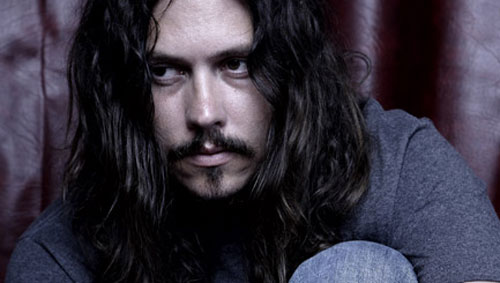BMI @ Lollapalooza 2007: John Paul White

Beginning in the early 1960s, musicians were drawn to a small dry town in Alabama, population around 10,000, because that’s where great records were being made. The first hit to come out of Muscle Shoals was cut in 1961 in Rick Hall’s Fame Studios: Arthur Alexander’s “You Better Move On” and for years thereafter — especially after local musicians built the Muscle Shoals Sound Studios in 1969 – the list of artists who came down to record included some of the most legendary musicians in the worlds of soul, country, pop, and rock.
The latest addition to that esteemed list is John Paul White. Unlike most of the artists who came before him, John Paul didn’t have to travel very far. He was born, and still lives, in Muscle Shoals.
Despite his hometown’s soulful reputation. John Paul says that while he was growing up, he was more likely to hear his mom’s Andy Williams and Perry Como records. And his dad, a die-hard country music fan, listened exclusively to his George Jones and Don Williams LP’s. This lack of early education notwithstanding, it seemed as though John Paul was on a path to Fame, in a more roundabout way.. He and a group of friends were preparing for a school talent contest. They were going to lip-sync AC/DC’s “Back In Black.” John Paul, who couldn’t play an instrument, was the band’s air-bassist. At one point, John Paul stepped up to the microphone and began singing, accapella, “Stand By Me.” The drummer said, “You can really sing.” “From that point on,” John Paul says, “nothing else mattered in my life.”
So at 16, John Paul was already playing in bar bands, and that’s where John Paul first connected with the brand of soul and (mostly southern) rock that was in his geographical DNA. Since it wasn’t likely that some major label A&R rep was going to walk into a bar in Lawrenceburg, Tennessee , John Paul decided to forgo his musical aspirations, temporarily, and enrolled at the University of North Alabama, in Florence.
Soon thereafter, John Paul met a local songwriter named Walt Aldridge, who was starting a joint-venture publishing company with EMI Publishing. An audition was arranged, and because John Paul didn’t want to sing any cover songs (“just so he wouldn’t compare me to any other versions”), he quickly wrote his first three original songs. Aldridge loved one of the three, and brought it to EMI. After John Paul wrote some more songs, he was signed to a publishing deal.
For a while, he drove back and forth between Muscle Shoals and Nashville, begging people to co-write with him, trying to write radio hits, and not getting anywhere. Frustrated with the progress of his writing career, he started taking computer programming classes. But he still had some publishing money to do demos, so he decided to cut some new songs. “I wanted to write the best songs I could write, and kept digging deeper, getting darker, figuring it out.”
At the beginning of 2005, John Paul gathered together musicians he knew from doing demos, and they recorded four songs. Immediately, he knew that this was his calling card. “I knew I was ready. I’d never been more confident. I thought, ‘now’s the time’.”
His publishers at EMI Nashville agreed. As soon as they heard the new material, which leaned more in a rock direction, they sent it to their New York office. EMI NY “jumped in with both feet.” By the summer of ’05, John Paul was meeting with A&R people from major labels. “I made it clear to everyone I met with that this was how my record was going to sound.” On a trip to LA, he played one song for the President of Capitol Records, who committed on the spot to signing him. This past fall, John Paul took the short – but long – journey over to Fame Studios in Muscle Shoals to record his debut Capitol album.
On his MySpace page, where most artists have biographical information, John Paul has posted a poem by Charles Bukowski. It says, in part:
there’s a bluebird in my heart that wants to get out but I’m too clever. I only let him out at night sometimes when everyone’s asleep. I say, I know that you’re there, so don’t be sad. then I put him back, but he’s singing a little in there, I haven’t quite let him die






Community
Connect with BMI & Professional Songwriters